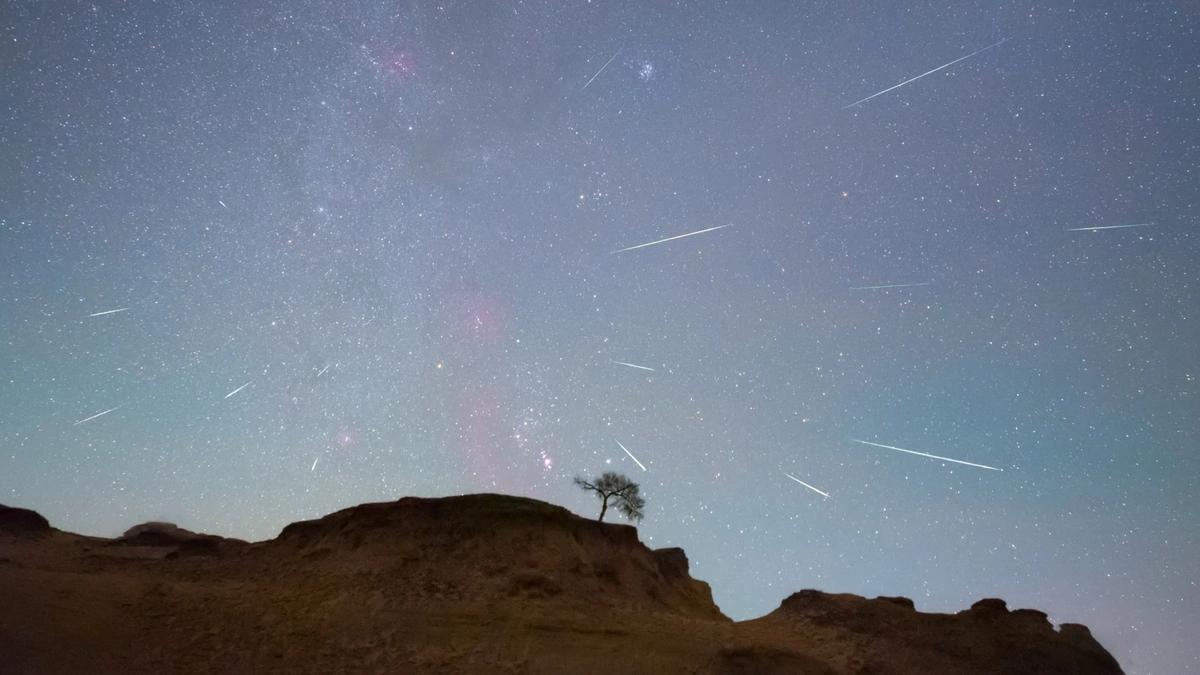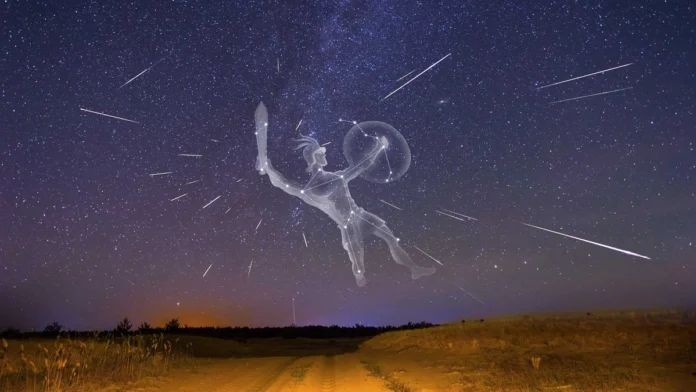Okay, stargazers, let’s talk about meteor showers . You might have missed the Draconids, or maybe you caught a glimpse either way, the cosmos never sleeps! Here’s the thing: while the Draconids are like a short, sweet pop song, the Orionids are the epic rock ballad you wait all year to hear. Why? Because they’re reliable, often beautiful, and have a fascinating story. And most importantly, they’re coming!
So, if you’re in India, itching to see some shooting stars, and wondering when to set your alarm, let’s get you prepped for the Orionids Meteor Shower in 2025. Forget just knowing the peak date; let’s understand why this shower is special and how you can make the most of it.
Why the Orionids are More Than Just Shooting Stars

Here’s why I get excited about the Orionids, and you should too. A common mistake I see people making is thinking all meteor showers are created equal. They aren’t. The Orionids are born from the debris of the most famous comet of all time: Halley’s Comet . Yes, that Halley’s Comet, the one that visits our inner solar system every 75-76 years. Each time Halley swings by, it leaves a trail of icy and dusty particles. When Earth passes through this trail, those particles burn up in our atmosphere, creating the streaks of light we call meteors.
What fascinates me is that when you see an Orionid meteor, you’re witnessing a tiny piece of a comet that last visited us in 1986 and won’t be back until 2061. It’s like a cosmic postcard from the past! This connection to Halley’s Comet gives the Orionids a special significance, a direct link to astronomical history.
When to Mark Your Calendar | The Orionids Peak in 2025
Alright, let’s get down to brass tacks. The Orionids meteor shower peak date typically occurs around October 21st or 22nd. Now, I initially thought nailing down the exact peak time would be straightforward, but it can vary slightly each year. Factors like the moon’s phase play a HUGE role. A bright, full moon can wash out fainter meteors, making the show less spectacular. I see a lot of stargazers miss this key detail.
So, here’s the key for 2025: check astronomical resources closer to the date for the most precise predictions. Websites like Time and Date (Time and Date) and space.com usually provide detailed forecasts. Start watching a few days before the predicted peak, and continue for a few days after. You might catch some early or late bloomers! This will help you maximise the number of shooting stars you are able to see.
And, a good tip for those in India, find a dark spot away from city lights. Seriously, the darker the sky, the more meteors you’ll see. Even a little bit of light pollution can drastically reduce visibility. Head out to the countryside if you can! Before you get started read this article on million year old skulls .
How to Actually See the Orionids (Even If You’re a Beginner)
Okay, so you know why the Orionids matter and when to look. But how do you actually see them? Here’s the “How” angle. Forget fancy telescopes; the best way to watch a meteor shower is with your naked eyes. Why? Because meteors can appear anywhere in the sky, and telescopes have a narrow field of view.
Find an open space with an unobstructed view of the sky. Lie down on a blanket or use a reclining chair. Let your eyes adjust to the darkness this can take about 20-30 minutes. Be patient! Don’t look at your phone during this time; the bright light will ruin your night vision.
The meteors will appear to radiate from the constellation Orion (hence the name Orionids ). Find Orion in the night sky, but don’t stare directly at it. Instead, let your gaze wander around the surrounding area. Meteors can appear anywhere, and you’re more likely to spot them in your peripheral vision. Remember to dress warmly, bring a thermos of chai, and maybe some snacks. Stargazing is a waiting game, so make yourself comfortable.
I have to say that a common mistake I see people make is thinking that they will see meteors constantly. There may be lulls, where you see nothing for several minutes, and then suddenly, a flurry of activity. That’s part of the fun!
The Emotional Connection | Why Stargazing Matters
Let’s be honest; life can be stressful. We’re constantly bombarded with information, deadlines, and responsibilities. Sometimes, we need to disconnect and reconnect with something bigger than ourselves. That’s where stargazing comes in.
Looking up at the night sky and witnessing a meteor shower is a humbling experience. It reminds us of our place in the universe, of the vastness of space and time. It’s a chance to contemplate, to reflect, and to feel a sense of wonder. And what fascinates me is that you don’t need any special equipment or knowledge to enjoy it. Just a pair of eyes and a willingness to look up. Before you go grab a jacket and check out this article regarding windows ESU for EEA here .
Think about it the light from those meteors has travelled for years, decades, even centuries to reach your eyes. You’re witnessing an event that has been happening for millennia, and you’re sharing that experience with people all over the world. It’s a connection to something ancient and universal.
Frequently Asked Questions (FAQ) About the Orionids Meteor Shower
When exactly is the best time to watch the Orionids meteor shower peak?
The peak is usually around October 21st or 22nd. Check specific forecasts closer to the date.
What if the weather is cloudy on the peak night?
Try watching on the nights leading up to or following the peak. The shower is active for several days.
Do I need any special equipment to see the meteors?
Nope! Just your eyes, a dark sky, and a bit of patience. Binoculars are optional but not necessary.
What is the meteor shower radiant?
The radiant is the point in the sky where the meteors appear to originate from (in this case, the constellation Orion).
How many meteors per hour can I expect to see during the peak?
Under ideal conditions, you might see up to 20 meteors per hour, but it can vary.
What causes meteor showers?
Meteor showers occur when the Earth passes through the debris trail left by a comet.
So, there you have it. The Orionids Meteor Shower in 2025 is an event worth marking on your calendar. It’s a chance to witness a cosmic spectacle, to connect with the universe, and to experience a sense of wonder. Don’t miss it!

